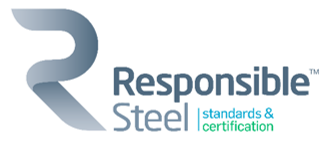Market Data

May 24, 2024
Op-Ed: Steel emissions policies have not forgotten about recycling
Written by Annie Heaton
Why have steel emissions policies forgotten about recycling? The short answer is that they haven’t. ResponsibleSteel was recently characterized in an article featured in the SMU Executive Newsletter as advocating for steel emissions policies which “discourage recycling.” In fact, ResponsibleSteel sees recycled scrap as playing a critical role in driving steel decarbonization. Recent revisions to the ResponsibleSteel International Standard’s Climate Change and Greenhouse Gas requirements were implemented to incentivize increased recycling rates. But scrap alone will not be sufficient to drive the industry’s decarbonization at the pace and scale we need.
There is a clear relationship between scrap and the emissions intensity of steel production – increase scrap to reduce emissions. Scrap-based electric-arc furnace (EAF) production is around 70% less emissions-intensive than iron-ore-based BF-BOF production (worldsteel, 2023).
If scrap steel was abundant, then using more would be the obvious solution to decarbonize the sector. It isn’t, however. Scrap resources are constrained to around 30% of global steel demand. They are also regionally unequal, with many more developed regions having greater access to scrap due to historically higher rates of steel consumption. Driving demand only for reduced-emissions steel made with scrap will result in ‘carbon leakage.’ We are already seeing scarce scrap resources being shifted to serve the highest paying customers whilst carbon emissions are displaced to other steelmakers that now can’t access that scrap. No net gain for the climate.
What’s more, under a ‘single emissions threshold,’ steelmakers using majority scrap would have no reason to decarbonize further since they may have already met the threshold for lower emissions steel. Given the slow progress the industry is making, and the giant reductions required to meet the Paris Agreement, any global standard must be ambitious for all steelmakers, whether they use scrap or iron ore.
To suggest that the ResponsibleSteel approach of scrap-variable thresholds (dubbed the sliding scale) “applies different emissions levels to steel products” misses the point. ResponsibleSteel’s decarbonization thresholds are designed not to compare products but to enable a fair comparison of every tonne of steel around the world, no matter how it has been produced or for what product it is destined. Notably, the ResponsibleSteel Standard also requires a product’s lifecycle emissions in the form of a Product Carbon Footprint or the Global Warming Potential value of Environmental Product Declarations.
The scrap-variable approach creates an equitable emissions reduction framework, ensuring a level playing field for steelmakers globally. The decarbonization thresholds were designed to accelerate the production of low-emissions steel by individual steelmakers while also driving the decarbonization of the entire global industry and avoiding a dash for scrap that would deliver no net gains for the climate. These thresholds test the decarbonization limits of all steelmakers, compelling them to make the necessary investments to shift energy sources and utilize or develop innovative technology.
The scrap-variable approach was developed through extensive stakeholder engagement and debate with steelmakers (including EAF producers), upstream suppliers, downstream buyers, civil society members, and global institutions. It has provided the foundations for the work of the IEA, the G7, the IDDI, and most recently, the German government and the Chinese Iron and Steel Association. Some scrap-based EAF producers and members of the scrap industry oppose the scrap-variable approach. But we cannot allow commercial or national interests to obstruct our progress towards responsible net zero. ResponsibleSteel’s primary objective has always been to drive down steel industry emissions responsibly on a global scale, regardless of company, country, technology route, or materials used. The momentum behind our Standard will do just that.
Editor’s note
SMU welcomes opinions from across the steel industry. We’re happy to welcome the thoughts above from ResponsibleSteel CEO Annie Heaton. If you have an opinion you’d like to express to the broader steel community, please contact us at info@steelmarketupdate.com.





